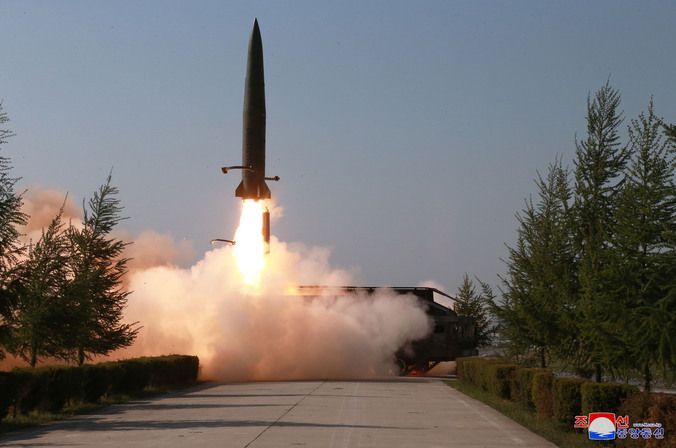 |
|
Caption: An image of a new type of short-range projectile launched by North Korea released by the Korean Central News Agency on May 9.
|
Kyodo News quotes government official
In a Sept. 23 report by Japan’s Kyodo News, an anonymous Japanese government official was quoted as saying that Tokyo has failed on several occasions to detect the trajectory of various short-range missiles launched by North Korea since May. Most of the projectiles that North Korea has launched during that timeframe have flown lower than normal, at 60km or below, on an unconventional flight path, Kyodo News reported. Several of them were not detected by Japanese Aegis destroyers deployed in the East Sea or by radars operated by Japan’s Maritime Self-Defense Force. Because of North Korea’s geographical location, its missiles are easier for South Korea to detect immediately upon launch and for Japan to detect on their downward trajectory. Japan apparently failed to detect at least two of the North Korean missiles that the South Korean military detected shortly after their launch, Kyodo News reported. That’s likely to magnify concerns that the termination of the two countries’ intelligence-sharing agreement (known as the General Security of Military Information Agreement, or GSOMIA) will have a negative impact on Japan’s national security. If Japan cannot detect North Korea’s missiles shortly after launch, it becomes much harder to intercept them. The South Korean government’s decision to withdraw from GSOMIA on the afternoon of Aug. 22 provoked a sensitive response from Japan, with then Japanese Foreign Minister Taro Kono summoning South Korean ambassador to Japan Nam Gwan-pyo at 9:30 that evening. According to analysts in the South Korean military and the Japanese Ministry of Defense, the projectiles that North Korea has fired since May have included the KN-23, regarded as a North Korean version of the Iskander ballistic missile; a new missile similar to the US tactical surface-to-surface missile; and rockets from a multiple rocket launcher system. The projectiles that Kyodo News said the Japanese government failed to detect include the KN-23, which reportedly travels as far as Japan on an unconventional flight path. By Cho Ki-weon, Tokyo correspondent Please direct comments or questions to [english@hani.co.kr]






